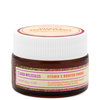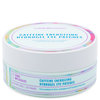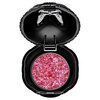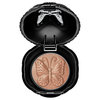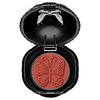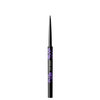
If your hair is naturally kinky, coily, curly or wavy, you’ve probably heard your share of hair myths and half-truths. It comes with the territory! Most of us know that “100-strokes-a-day” is flat wrong and split ends can’t be permanently repaired, but there are others still floating around. Do you recognize any of these common myths?
**Myth #1: Natural hair is strong. **
Looks can be very deceiving. Although it appears to be quite strong and durable, natural hair is some of the most delicate hair on the planet. While naturally kinky, coily, and curly girls tend to have many more strands per square inch of scalp, the individual strands are actually smaller or finer than those with naturally straight and wavy hair. The good news? Despite its need for extra TLC, textured hair is still healthiest and strongest when left in its natural state.
Myth #2: Natural hair is unprofessional.
Who said that “professional” had to mean sticking to stick-straight locks? Serious employers are more concerned with what’s in your head than what’s on it. Natural hair is, and has always been, professional. So rock your ringlets and gravity-defying locks with pride! Professionalism in today’s workplace is more rightly correlated with actual skill, qualifications, and job performance—not the shape of the fiber growing from one’s scalp. The only unprofessional hair to be had is hair that is unhealthy, unclean, or styled in a manner that compromises or prevents the actual performance of a job.
Myth #3: Natural hair is political.
For tree-huggers and free spirits, vegans, those who like neo-soul, poetry, spoken word, and other earthy “natural” things. True for some, but not for all. While a carefully coifed afro may be a symbol of pride and strength for one Natural, it may be no more than a fleeting fashion trend for another. Natural-haired women are as diverse and varied as any other random group of people, and in many cases, the only similarities they share are at the scalp level. Natural hair speaks for some us, but for others it doesn’t say a word.
Myth #4: Your natural hair curl pattern and texture are set in stone.
Most of us are no strangers to changing up our looks with styling products and tools— but did you know that our hair also naturally transforms itself over time? Our bodies are constantly in a state of change as we age or make changes our diet. Hormone levels and health conditions can influence our hair’s color, strand thickness, curliness and overall density over time. And here’s how: Although the actual strands of hair we see are non-living, the hair follicles just underneath the scalp are very much alive. These follicles determine the quality and type of hair we eventually produce, and they are affected by everything from styling practices to the foods we eat and the medications we take.
Myth #5: Cleansing, conditioning, and wetting too often dries out natural hair.
This myth has caused quite a few of us to deprive our hair of what it absolutely needs most: water. Kinks, curls and waves thrive most when hair care regimens are hydration-focused. Water improves the hair’s elasticity, reduces breakage and enhances curl definition—a win-win for Curlies. To reap the best benefits from water: avoid using harsh, sulfate-based shampoo formulas on your hair and always pair your moisture treatments with an oil sealant to prevent moisture loss— the true cause of dryness for textured hair types.
Myth #6: Oil moisturizes natural hair.
Oil is great for many things, but a moisturizer it is not! Moisture is hydration, and hydration can only be achieved with water and water-based products. Oils are sealants and lubricants that help trap moisture in the hair to prevent moisture loss. Using an oil as your moisturizer will only lead to dryness down the road. So, despite the fact that product companies shout from the rooftops about their amazing “moisturizing oils,” oil as moisture is a myth.
Myth #7: Trimming makes natural hair grow.
This myth is one that won’t go down without a fight! Remember: what happens at the ends of our hair has no bearing on what happens at the scalp. Hair trimming is all about basic math. Although regular trims are a great way to maintain your hair and keep it looking its best, cut hair is still length lost. All hair grows about ¼ to ½ inch per month with or without trims, so the more rigorous your trimming schedule, the less length you’ll accumulate over time. To see more growth, you’ll need to space out your trims and ensure that you are always trimming less hair than you are growing in. So, trim to keep those split and damaged ends under control, but remember to keep the math in check!

Audrey Sivasothy is a Houston-based freelance writer, health scientist and industry authority on hair care. She is the author of Hair Care Rehab: The Ultimate Hair Repair and Reconditioning Manual and international bestseller, The Science of Black Hair: A Comprehensive Guide to Textured Hair Care. Her expertise has been adopted for cosmetology training courses and her books continue to maintain bestseller status across the globe.
Follow Audrey on Twitter @BlackHair101!
You Might Also Like
-

Stories
How to Grow out Heat-Damaged Hair—While Still Using Heat
- 4
-
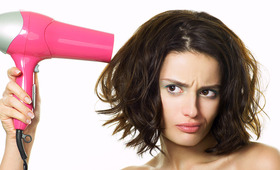
Hair
Three Common Hair Mistakes and How to Avoid Them
- 2409
-
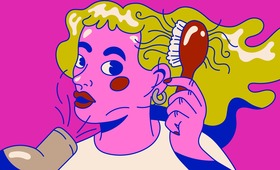
Hair Health
Could You Be Shedding Too Much?
- 1
-
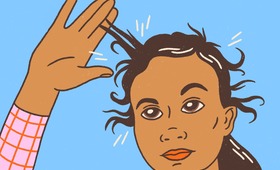
Hair Health
5 Easy Ways to Get Rid of Split Ends Fast
-

Ingredient Spotlight
Now Trending: Baobab Oil in Skincare and Haircare
- 1
-

Hair
5 New Year’s Resolutions for Healthier Hair
-

Hair Color
Hair Dye Disasters And How To Fix Them
- 1261
-

Hair Health
Embracing the Gray Area: A Round-Up of the Best Hair Care for Silver Strands




